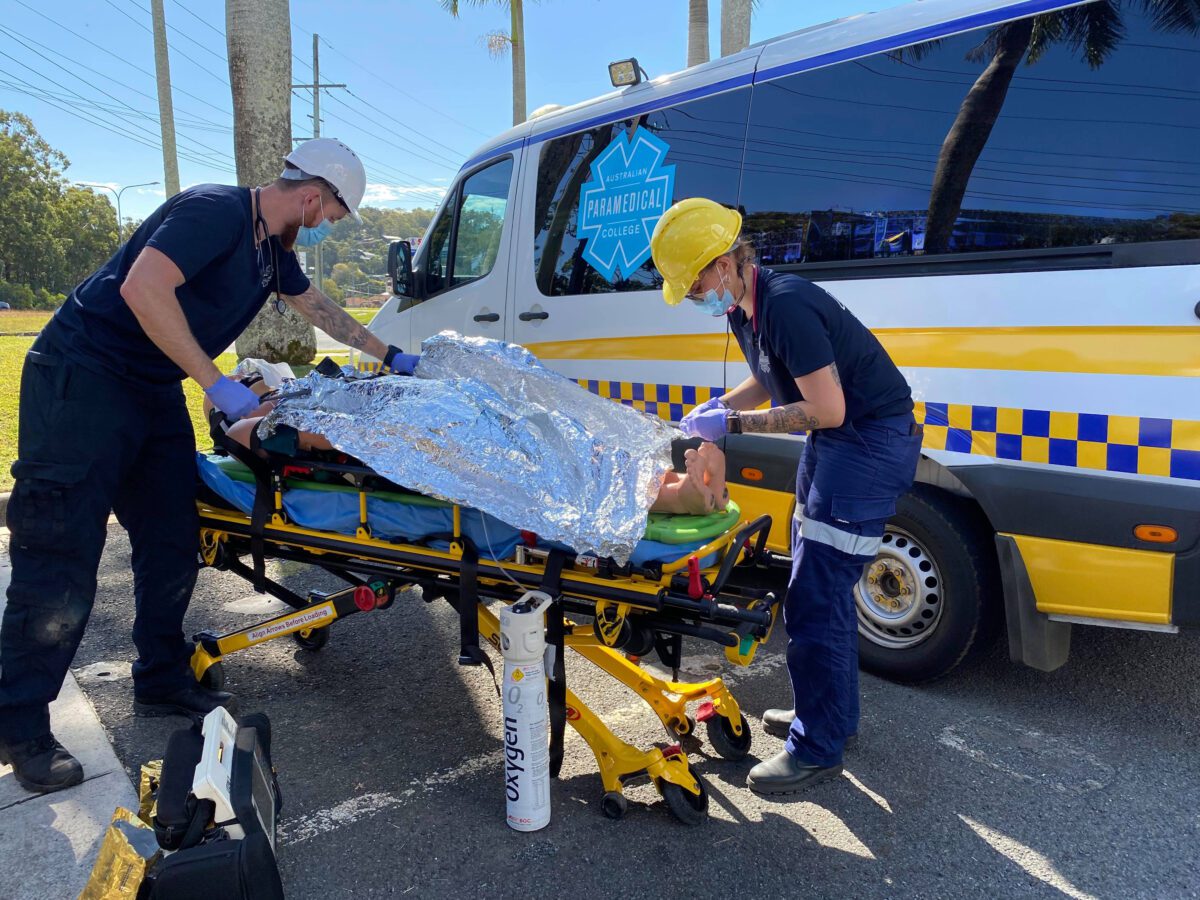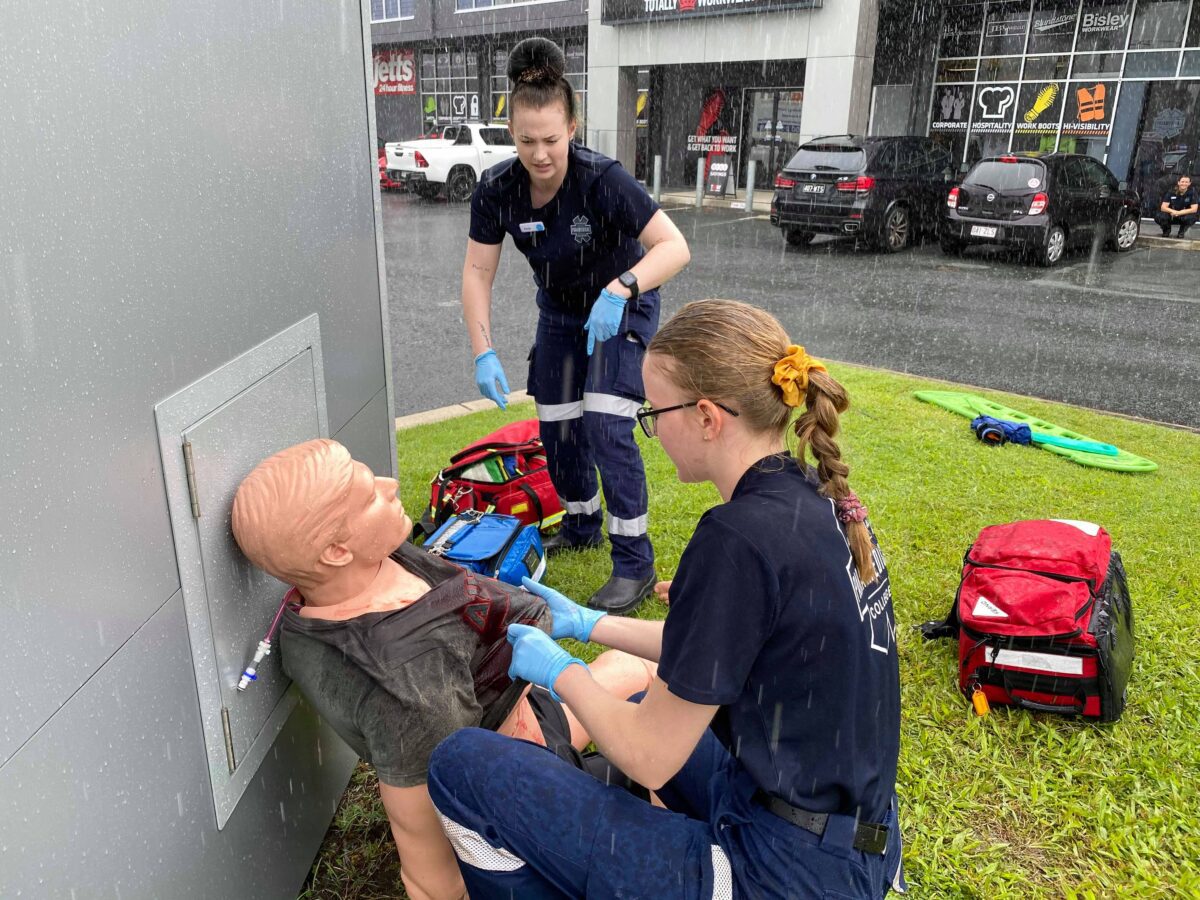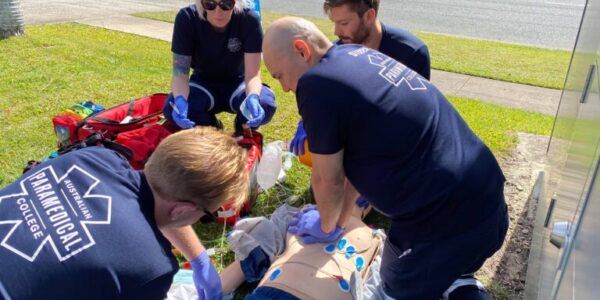Re-published 18th June, 2024
While Australia is known for its warmer climate, there is always the risk of a patient suffering hypothermia in the winter months. If someone becomes lost while hiking, falls into cold water, or ill-prepared for an extreme weather event – one or all of these things can lead to mild or severe hypothermia.
Be in the know about hypothermia treatment and how you could become qualified to treat patients.
What is hypothermia?
Paramedics commonly define hypothermia as a dangerously low core body temperature. It occurs when the body temperature drops below 35°C, causing the heart and respiratory system, in particular, to malfunction. If left untreated or not promptly addressed, it leads to a complete collapse of vital functions, and eventually, the body will give in and collapse.
Is hypothermia life-threatening?
Hypothermia can absolutely be life-threatening. Prolonged exposure to cold environments, whether due to cold weather, sustained immersion in water, or icy conditions, can lead to complete heart failure and, in some cases, death. With this in mind, it’s essential to know hypothermia treatment methods.
Hypothermia treatment
You don’t need to be a paramedic to treat hypothermia, but there certainly are some tips you can take from paramedics when treating someone with hypothermia.
Paramedic advice #1: Keep the patient safe and stabilised
Upon arriving at the scene of a patient who is believed to be suffering from hypothermia, paramedics will assess the scene for danger. This is for two reasons:
- The patient is not in any further danger and can be moved to a safe and warm environment.
- To ensure the paramedics are not placing themselves in immediate danger by attending to the patient, resulting in the chance of further casualties.
If you’re looking for the simplest way to heat a patient in a safe environment, paramedics will generally place the patient on a stretcher and into the back of an ambulance with the heating turned on. Paramedics will always treat suspected hypothermic patients with additional precautions as they are at a greater risk of irregular heartbeats.
Paramedic advice #2: Prevent further heat loss from the patient
Once the patient is stabilised in the back of the ambulance, paramedics will attempt to prevent further heat loss in the patient. This can be done by performing the following actions:
- Minimising movement from the patient, especially inadvertent jerk movements, can trigger dangerous irregular heartbeats. Where possible, paramedics will transport patients on a stretcher to lessen the movement required from the patient and keep them in a stable position in case of injuries.
- If the patient is wet, remove this clothing immediately and replace it with dry clothing. Where no clothing is possible, replace it with a blanket/sleeping bag.
- If available, give the patient a space blanket (also known as a foil blanket, as seen in the image below), which helps the body regulate its temperature.

Paramedic advice #3: Attempt to rewarm the patient
Externally, the body may be warming, but the next step is to bring the patient’s core body temperature back to safe levels for hypothermia treatment. There are several methods paramedics usually employ. They include the following:
- Apply external warm, dry compresses or heat packs. These include hot water bottles and chemical packs placed in the axillae, groin, and abdomen. Note that paramedics will ensure to avoid causing body surface burns due to excessive use of the heat packs.
- When heat packs are inaccessible, a paramedic’s tip is to perform skin-to-skin contact to warm patients. This heat transfer from the rescuer to the patient is critical in dire situations.
- If available, provide the patient with warm beverages that are non-alcoholic and non-caffeinated.
Paramedic advice #4: Administer further medical treatment, if your scope of practice allows
In most cases, patients can be actively rewarmed as you transport them to hospital. In severe hypothermic cases, paramedics may use a mobile blood warmer like a MEQU.
A MEQU is a battery-powered portable fluid warming system that administers warmed blood and blood products. This ensures the products administered do not further cool the patient but instead warm them up.
Could you become a paramedic and help a patients suffering from hypothermia?
Now that you have the crucial steps involved in hypothermia treatment as recommended by paramedics – you can keep someone alive if you find yourself in the position to help.
If you want to give back to your community even more, consider studying for a pre-hospital qualification with Australian Paramedical College (APC). With the aid of clinical workshops and online support, enjoy unlimited access to teams who are always ready to help and assist.
Choose from three qualifications:
- HLT51020 – Diploma of Emergency Health Care (formerly known as Paramedical Science)
- HLT41120 – Certificate IV in Health Care
- HLT31120 – Certificate III in Non-emergency Patient Transport
Or let us take the stress out of deciding and complete your FREE Career Development Plan by clicking the button below.
We look forward to having you on board!

